 Facebook
Facebook
 X
X
 Instagram
Instagram
 TikTok
TikTok
 Youtube
Youtube
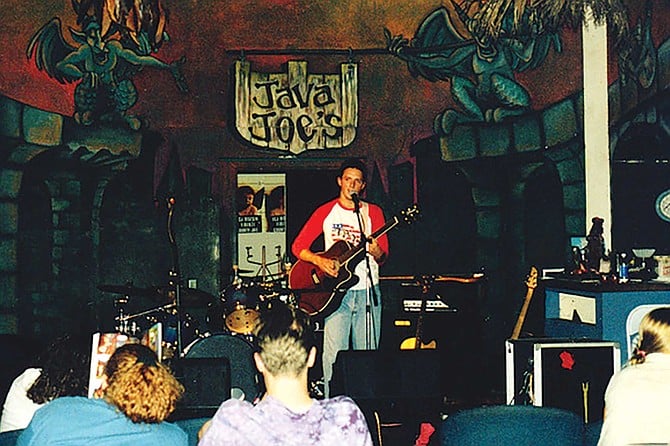
Buckle Up
Slide into the passenger seat and buckle up: we’re about to take a driving tour down a decidedly rocky road. Yes, California’s second-largest city will always take a backseat to Los Angeles, which gave the world the Beach Boys, the Byrds, the Doors, and countless other rock 'n' roll legends. But San Diego has its share of storied rock 'n' roll landmarks worthy of recollection, particularly at a time when vinyl record sales are surging and classic rock songs keep popping up in popular movies and video games. (It’s not just the Guardians of the Galaxy Awesome Mix; you also heard Black Sabbath’s “Paranoid” in 2017’s Kong: Skull Island, and of course, AC/DC’s “Back in Black” in the first Iron Man movie.)
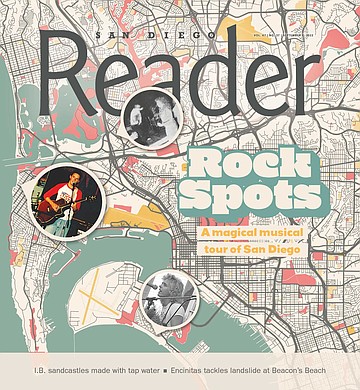
On today’s tour, we’re not stopping by the obvious choices, the places that are still thriving, like the Belly Up Tavern in Solana Beach, which has served as the hotbed of live music in North County since the middle ’70s (and where the Rolling Stones played a private show a few years back). Or the arenas, amphitheaters and stadiums that continue to host the biggest of the big national touring acts, from Paul McCartney to the Eagles.
Instead, we’re going to pinpoint twenty-six locations in San Diego that should be of interest to any self-respecting rock ‘n roll historian. From the family home of Doors singer Jim Morrison in Coronado to the Del Cerro supermarket where Bob Marley once smoked a fat one in the produce section; from the former skating rink in downtown where Elvis Presley played his first-ever San Diego concert to the local coffeehouses that launched the careers of Tom Waits and Jewel; from the dive bars that were favorite watering holes of Eddie Vedder and Cameron Crowe to the College Area Jack-in-the-Box where the four original Ramones got their first taste of Mexican food (yes, the cheapo tacos).
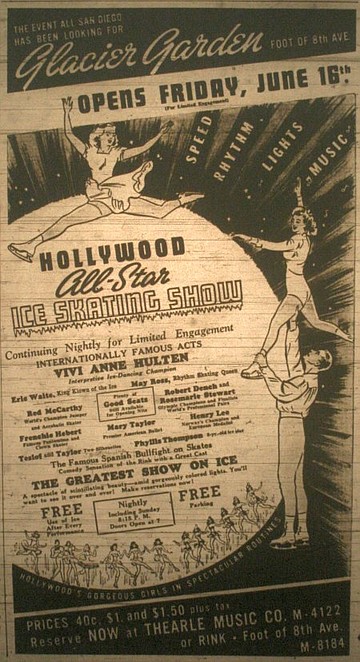
Downtown, Everything’s Waiting for You
We’ll start our tour in downtown, on the southeast corner of Petco Park, where the San Diego Arena — originally Glacier Gardens — used to stand, right where Eighth Avenue ran into Harbor Drive. The Arena was both skating rink and athletic auditorium, and it’s where Elvis Presley made his first-ever San Diego concert appearance in April 1956. Elvis was a cultural earthquake. At the time of his two-night stand, April 4 and 5, his song “Heartbreak Hotel” had just come out and was racing up the charts. More than 10,000 screaming fans, most of them women, crowded into the auditorium to see the King do his thing.
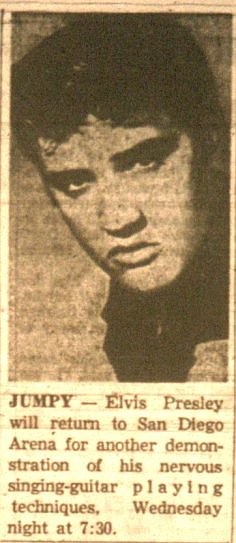
A small group of them broke into Presley’s dressing room after the show and stole the toilet seat. Deejay Don Howard told Kicks that Presley’s Cadillac, parked outside, was covered with obscene messages, “and two sailors were arrested for masturbation during the show from watching the antics of the girls.” A dozen nude girls were also busted at the nearby El Cortez Hotel as they ran through the lobby, trying in vain to find Presley’s hotel room. The city promptly passed a resolution forbidding Presley from ever playing in San Diego again.
Fast forward two decades and head west. Our next two stops are where San Diego’s late-’70s punk-rock scene began at two clubs: the Skeleton and the Zebra. From January to May of 1980, The Skeleton Club occupied the ground floor of the Douglas Hotel at 206 Market Street; the hotel was built in 1924 and torn down in 1985 as part of the first wave of downtown revitalization. During its brief life, the club hosted such pioneering punk bands as X, The Plugz, The Weirdos, Lydia Lunch, Alley Cats, and local favorites such as DFX2 and The Rick Elias Band.
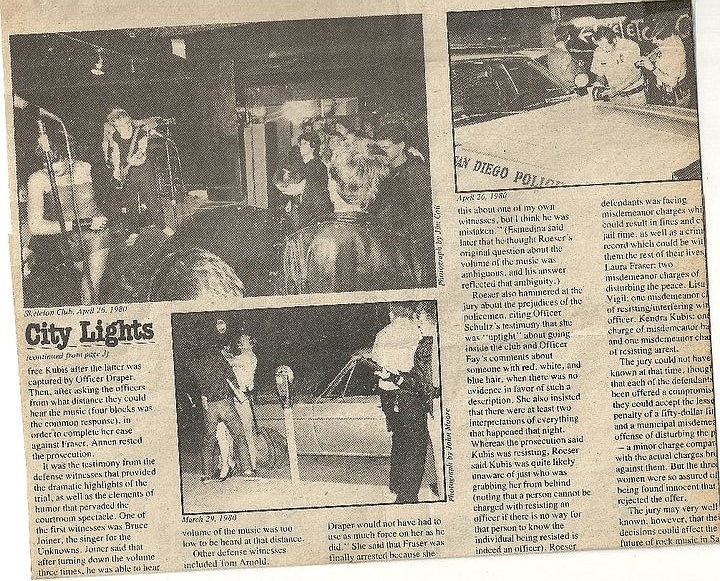
The club also hosted the San Diego debut of The Go-Go’s, who opened for the Alley Cats. Tim Mays, who now runs the Casbah at Kettner and Laurel, was one of the original partners in The Skeleton Club. Mays said the club’s location, two blocks from the police station, was a problem that ultimately led to its closure due to licensing issues. “It was very, very underground,” Mays says. “The club had this red and gold flocked wallpaper, and it was dark, and back then Second and Market was a pretty sketchy area. But it was invigorating, it was exciting.” Today, the site of the Douglas Hotel is home to Market Street Square, a rather homely pink-and-beige mixed-use building with apartments and ground-floor businesses such as the Happy Head massage parlor.
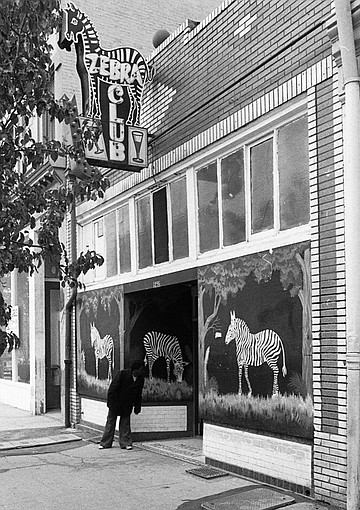
The nearby Zebra Club (560 Fifth Avenue), which opened just after The Skeleton Club, was home to such pioneering local new wave bands as the Dinettes and the Crawdaddys. Cameron Crowe was a regular when he returned to San Diego, masquerading as a high school student, to research Fast Times at Ridgemont High, the best-selling book that became a top-grossing movie. The brick building that was home to the Zebra Club was subsequently restored as part of the Gaslamp Quarter’s revitalization and is now home to El Chingon, a Mexican restaurant and bar.
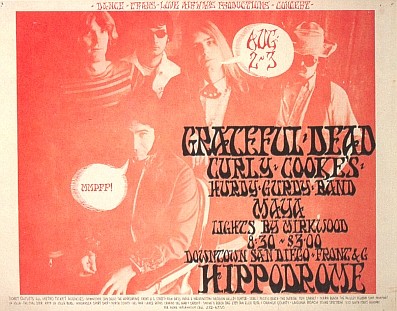
Just a few blocks south, on the southwest corner of Front and G, is the spot where a former skating rink-turned-concert venue called the Hippodrome (211 G Street) brought a taste of the Summer of Love to San Diego in the late ’60s. Promoters booked mostly San Francisco bands into the venue, including the Quicksilver Messenger Service and the Grateful Dead, as well as the artsy Velvet Underground, which played there two nights in June 1969. The site is now home to the 600 Front Apartments.
Over the Rainbow, Over the Bridge
Next on our tour, we’re going to cross the bridge into Coronado, which is, perhaps surprisingly, home to more rock ‘n roll landmarks than any other single community in San Diego County. Start with the stately Spanish-style home at 735 Guadalupe Avenue that was home to George and Clara Morrison, parents of Jim Morrison — the notoriously talented, and just plain notorious, lead singer of The Doors.


The nomadic Morrison family had moved to Coronado in the early ’60s when George was stationed at the North Island Naval Air Station; Jim was already living in Los Angeles, where he attended UCLA. In 1967, the same year The Doors’ first album was released, the elder Morrison was elevated to the rank of Admiral. Jim was estranged from his conservative military family, particularly his father, who upon hearing the first Doors album reportedly wrote his son a letter, pleading with him to give up music. Jim Morrison, an alcoholic and drug user, died in July 1971; his girlfriend found him dead in the bathtub of the apartment the two shared in Paris. Admiral George Morrison died in 2008, at the age of 89, in a Coronado hospital. (The Morrisons also briefly lived at 2634 Arnott Street in Clairemont when Jim was 11).
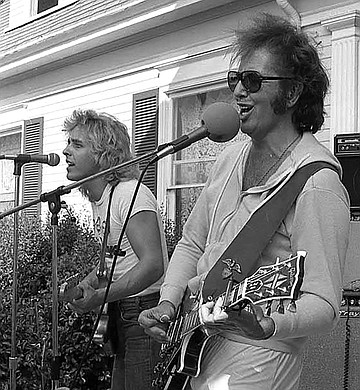
Joey Harris, the lead singer of San Diego’s own Beat Farmers, grew up in the iconic “Wizard of Oz” house at 1101 Star Park Circle, so nicknamed because it was once the home of Oz author L. Frank Baum. Harris joined the Beat Farmers in 1986, on the eve of their major-label debut on MCA/Curb Records; he sang lead on “Hideaway,” which became an FM radio hit and was featured on the Major League movie soundtrack. Music was in his blood: Harris’ uncle was Nick Reynolds, an original member of the Kingston Trio. (Reynolds, incidentally, also lived in Coronado long after his run with the Kingston Trio came to an end in 1967. In the early 1980s, he worked as a bartender at Bula’s Pub & Eatery at 170 Orange Avenue, now home to the Coronado Brewing Company. Reynolds later married Leslie Yerger Kapiloff, the ex-wife of Judge Lawrence Kapiloff. He died in 2008.)
Pet Sounds at the petting zoo
Time to leave the island. Our next stop is the San Diego Zoo (2920 Zoo Drive), which is where The Beach Boys in February 1966 shot the cover photo for what many consider their masterpiece, Pet Sounds. The photo of the five band members surrounded by goats and sheep was taken in the petting coral of the Children’s Zoo, recently torn down to make room for a new 3.2-acre interactive exhibit called Wildlife Explorers Base Camp.
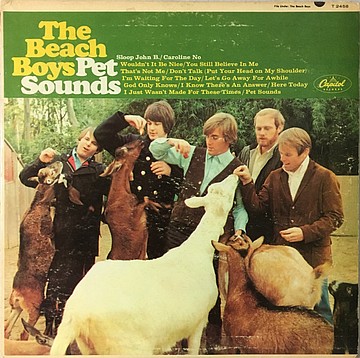
The shoot, according to an interview Beach Boy Al Jardine did many years later with the San Diego Union-Tribune’s George Varga, was the idea of the Capitol Records art department, which saw the title of the band’s upcoming album and, without bothering to give it a listen, assumed the songs were about animals. Jardine told Varga. “The goats were the most aggressive and that’s why that big white goat in the cover photo was in my face while I was feeding it. We were thrown into the thing, pretty much.”
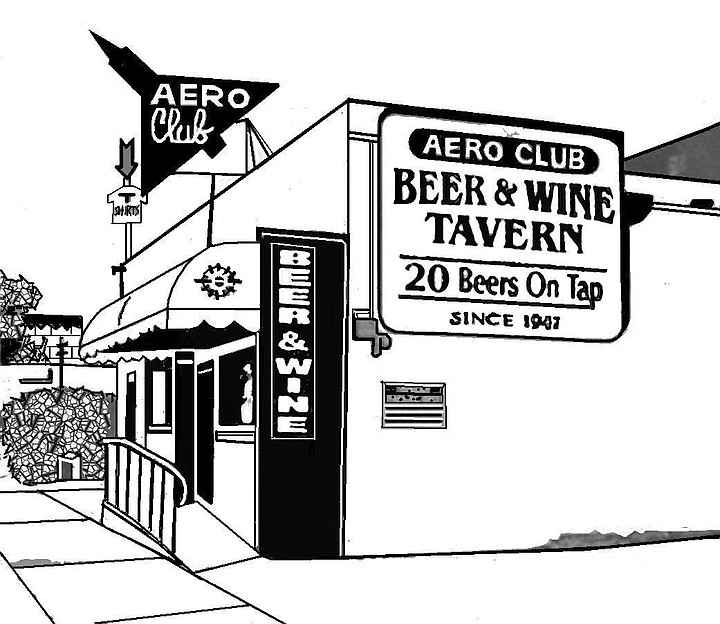
Midway Through This Tour
Heading back to downtown and then north, we stop at a trendy little bar called the Aero Club at 3345 India Street. It’s a bit more upscale these days, with pricey whiskeys and other alcoholic imbibements arranged on bleacher-like shelves behind a stylish bar, but back in the late ’80s, it was a classic dive bar, and it’s where Eddie Vedder liked to hang out before he moved to Seattle to form Pearl Jam. Sometimes he would go there with his friends from San Diego State University or bandmates from Bad Radio, the band he was in at the time; other times, he’d hang with his girlfriend, Beth Liebling, who was majoring in journalism, also at San Diego State.
A little further north, on the Pacific Highway frontage road at 4024 Pacific Highway, stands an unassuming industrial building, constructed in 1943 to accommodate airplanes, that was once the home of J.J.’s, a hoppin’ concert spot jointly owned by aspiring club owner Jerry Herrera and concert promoter James Pagni (hence the name, taken from their first initials).
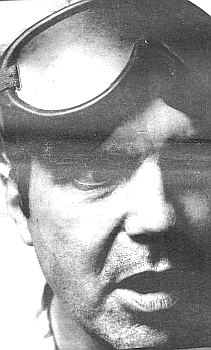
Between 1973 and 1975, J.J.’s featured a steady stream of touring rock acts, either not yet or no longer big enough for larger venues such as the San Diego Sports Arena or Golden Hall. Among them: the Electric Light Orchestra, Steely Dan, King Crimson, the New York Dolls, Foghat, the Climax Blues Band, and the Supremes. Years later, it would be repurposed as Cousin’s Warehouse, an appliance and consumer electronics mega-store known for its bright-orange exterior. Today, the building is subleased to several tenants, including Crossfit Humanity and Sign King.

Further north, at 1130 Buenos Avenue, off Morena Boulevard, is a dark and musty rock 'n' roll club called Brick by Brick, virtually unchanged from its run in the late ’70s and ’80s as The Spirit, a legendary rock ‘n’ roll establishment opened by Jerry Herrera shortly after J.J.’s was shut. The Spirit was haven for local new wave bands as well as national touring acts ranging from X, The Circle Jerks, and Black Flag, to R.E.M., who played there in June 1983, around the same time their debut album Murmur was released.
Through Clairemont to the Beaches
Our next two stops take us deep into the heart of Clairemont. Driving up Clairemont Drive from the 5, there’s a paving-stone driveway, leading to a condo development, where 3093 Clairemont Drive used to be (right next to Moda Yoda). This is the site of the old Clairemont Bowl and its adjoining nightclub, The Quad Room, where San Diego’s most famous native son, Gary Puckett, launched a career that would see him lead his band, The Union Gap, to the top of the pop charts with such late ’60s hits as “Woman, Woman,” “Young Girl,” “Lady Willpower” and “Over You.”

Gary and the Remarkables were the house band at The Quad Room in 1966; a year later, they changed their name to The Union Gap, got signed to Columbia Records, and began a hit streak that in 1968 saw them sell more records than anyone except for The Beatles. Puckett, who turns 80 in October, now lives in Florida but still tours the country with a new version of The Union Gap; the band still performs in their trademark Civil War uniforms.
A little further up the road, on a side street with the lovely name of “Ute,” is Clairemont High School, whose grand opening in September 1958 featured a concert by Ritchie Valens, a big draw with teens due to his two big hits, “La Bamba” and “Donna.” The show had been booked by local deejay Harry “Happy Hare” Martin. “I was asked by the principal of the school to put on a show to promote school spirit,” Martin said in an interview published in the November 1979 issue of Kicks Magazine. “I called Richie Valens and, in my naivete, I just asked him to come down from Los Angeles [where he lived] and sing in the school yard. It was a typical September day when he performed for an hour at noon, on hot clay with absolutely no grass around.” Five months later, Valens was dead, killed in a plane crash in Iowa along with Buddy Holly and J.P. “The Big Bopper” Richardson.


Continuing north on Clairemont Drive, turn left on Balboa and drive west into Pacific Beach. Mission Bay High School, at 2475 Grand Avenue, earns a spot on our list because Frank Zappa spent his sophomore year here in the middle ’50s while he and his family were living in San Diego. It was momentous school year for young Frank; he played in the school rhythm-and-blues band, The Ramblers, and was turned on to composer Anton Webern by band director Robert Kavelman, according to an undated Reader story. Webern and his 12-tone music would be a major inspiration for Zappa. (Zappa also attended Grossmont High School his freshman year.)
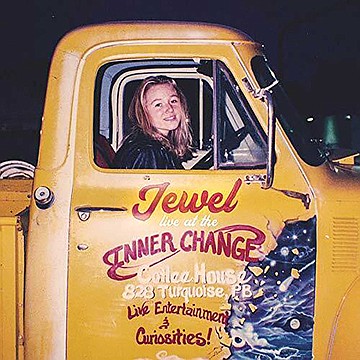
Further west, on the northeast corner of Mission Boulevard and Turquoise, is a tiny building (828 Turquoise) that used to be the Inner Change Coffee House. That’s where Jewel got her start back in 1993. Her boyfriend at the time, musician/songwriter Steve Poltz, recalls, “I met her when she was working at the original Java Joe’s in Poway. I said, ‘You should play somewhere nobody else is playing, so we found that place, the Inner Change, and this really cool lady named Nancy [Porter] was the owner, and then after a year all these people and record labels started showing up. It was really weird. You’d see limousine after limousine pull up to this tiny coffeehouse with surfers inside.” A bidding war erupted, and within months, at the age of 19, Jewel was signed to Atlantic Records and began recording her debut album, Pieces of You, which was released in February 1995 and went on to sell 12 million copies worldwide. Live portions of the album had been recorded at the Inner Change.
Less than two miles further south along the Mission Beach isthmus is the Single Fin Grill at 3842 Mission Boulevard. Fifty years ago, the historic building was known as The Heritage Coffee House, where Tom Waits began his illustrious career. Waits worked his way up from doorman to bartender and frequent open-mic performer at the Heritage, which at the time was a hotspot for latter-day folkies such as Sam Hinton and Big Joe Williams. Waits had grown up in Chula Vista, attended O’Farrell Community School, and worked as a waiter at Napoleone’s Pizza Restaurant in National City. After gigging at the Heritage, he moved to Los Angeles and snagged a recording contract with Asylum Records. Waits in 2015 was ranked at No. 55 on Rolling Stone’s “100 Greatest Songwriters of All Time” list, four years after he was inducted into the Rock and Roll Hall of Fame.
Still further south, in Ocean Beach, is the Java Joe’s at 4994 Newport Avenue where Jason Mraz got his start more than twenty years ago. Bill Silva, who for eighteen years was Mraz’s manager, recalls, “The first time I took him in to introduce him to Joe, it happened to be a ‘greatest hits’ night with all the top local singer-songwriters performing. I remember Joe giving the skinny new kid a ‘You’ll have to prove yourself’ squint, but Carlos Olmeda and Gregory Page couldn’t have been more gracious and inviting, and one of them gave Jason his guitar and encouraged him to get up and take a turn at the mic. I think they all had the same goosebumps that I experienced the first time I saw Jason. That was April 1999, and our plan was to give Jason time to keep working on his songwriting and honing in his concert performance. Happy to say it all worked out!” It certainly did. Mraz went on to sell millions of albums and win two Grammy Awards. His biggest single, “I’m Yours,” spent no fewer than 76 weeks on the Billboard Hot 100. As for Java Joe’s, it’s now a Starbucks.
North County’s Good Schools
Our rock 'n' roll tour now ventures into North County, to the coastal town of Encinitas, where we find San Dieguito High School Academy (800 Santa Fe Drive). The school’s most famous alumnus is Chris Hillman, an original member of The Byrds and the Flying Burrito Brothers. Hillman grew up in Rancho Santa Fe, where his dad, David Hillman, was the publisher of the Rancho Santa Fe Times. Chris developed an interest in folk and bluegrass and learned to play the mandolin, joining such outfits as The Scottsville Squirrel Barkers and The Golden State Boys. After graduating from San Dieguito High School, Hillman moved to Los Angeles, where he was recruited to join a new band, The Byrds, whose subsequent hits “Mr. Tambourine Man” and “Turn, Turn Turn” combined folk music with a Beatles beat and won the band acclaim as America’s answer to the Fab Four. Hillman, now 76, currently lives in Ventura.
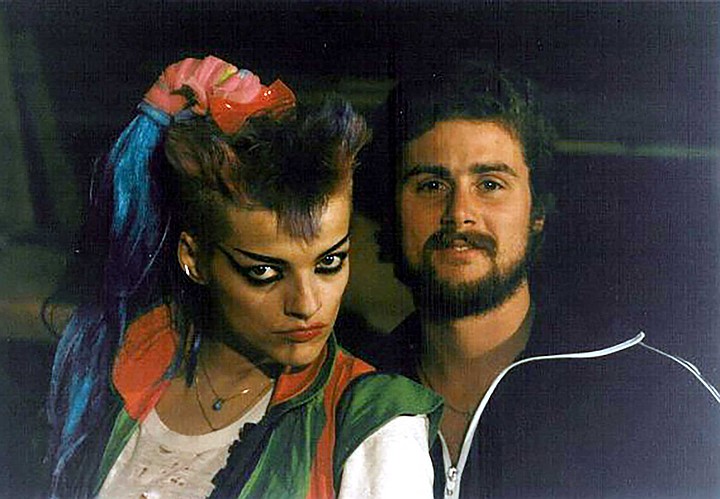
Next is another high school, this one to the east in the inland suburb of Rancho Bernardo. Rancho Bernardo High School (13010 Paseo Lucido) was the launching pad for Blink-182, which over the last thirty years has sold upwards of 50 million albums worldwide. Guitarist Tom DeLonge enrolled in the school after he had been kicked out of Poway High for being drunk at a basketball game. Competing in a battle of the bands contest, DeLonge met drummer Scott Raynor; he later met bassist Mark Hoppus, and in 1992 the three formed the nucleus of Blink-182. The band split in 2005 but has since gotten back together on several occasions, with various personnel changes. In 2011, Jon Caramanica wrote in the The New York Times that “no punk band of the 1990s has been more influential than Blink-182.”

Further north, at 905 Viewpoint Drive, just north of Lake San Marcos, is the home where Ike Turner spent his final years — and where he died on December 12, 2007, at the age of 76, reportedly of a cocaine overdose, according to CNN. Turner was best known as the “Ike” in The Ike and Tina Turner Revue, the ’60s soul troupe best known for the Phil Spector-produced classic “River Deep, Mountain High.”

Due west, in an Oceanside trailer park known as El Camino 76, at 220 North El Camino Real, space 5, is the boyhood home of Stevie Salas, a homegrown musician who went on to tour and record with the likes of Rod Stewart, Public Enemy and Mick Jagger, in addition to fronting his own band, Colorcode, which achieved superstardom in Japan. Salas, who is of Apache ancestry, most recently executive produced the Emmy Award-nominated music documentary Rumble: The Indians Who Rocked the World, which aired on PBS, won a storytelling award at the Sundance Film Festival and is now showing on Netflix.
College Rock
We’re heading back south to the College Area. Our first stop is the Jack-in-the-Box restaurant at 5155 College Avenue, just north of Montezuma Road near San Diego State University. This is where The Ramones — the four originals, Joey, Johnny, Dee Dee and Tommy — had their very first taste of Mexican food. This one’s a personal story: On March 12, 1977, the groundbreaking New York punk band was booked into the SDSU Backdoor for their first San Diego (city) appearance. I was the rock critic for the school’s Daily Aztec.
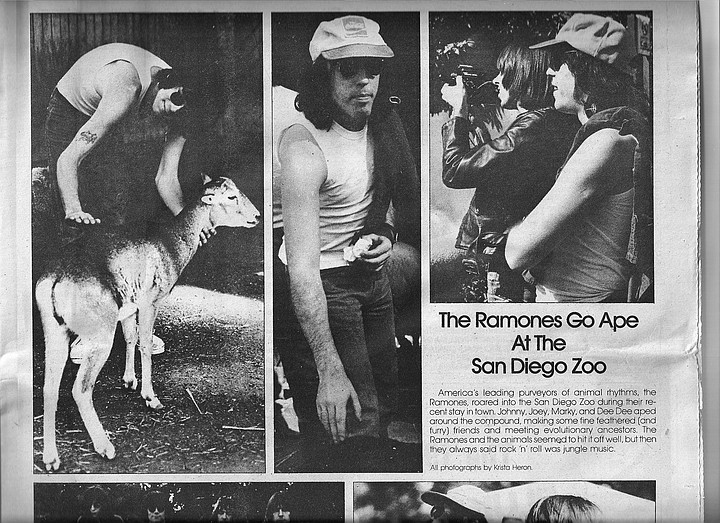
The afternoon of the show, I got a frantic call in the Aztec office from my record company contact, who breathlessly told me the band’s road manager had fallen ill and asked if there was there any way I could pick the band up at the airport, feed them, get them booked into their hotel, and get them to their two shows that night at the Backdoor? No problem, I assured her. Being 18 and not much of a gourmand, after I picked the band up, I took them to my favorite restaurant, which was close to both the Backdoor and their hotel further east on El Cajon Boulevard: Jack-in-the-Box. I ordered my customary two tacos for 99 cents and all four Ramones did the same. Fast forward to 2005: I am producing a Music on DVD conference in Los Angeles, and one of our panelists is Tommy Ramone, the last surviving member of the original quartet. Over dinner, I mentioned the first time I met him and his eyes lit up: “Yeah, you’re the guy who introduced us to Mexican food.”
Just a few blocks away, at 5704 El Cajon Boulevard, is an art-deco-ish building that was once the home of Monty Rockers, a record store Dan McLain opened in early 1977, shortly before he would form pioneering local punk band The Penetrators and years before he would achieve international fame as the beer-swillin’, table-leaping Country Dick Montana of the Beat Farmers. In an October 1977 Reader story on local record stores, writer George Varga praised the store’s “living room atmosphere” and singled out such amenities as free coffee, water and pinball. Unlike other record stores, he wrote, Monty Rockers also rents records. “I don’t take just any albums, like some stores do,” McLain told Varga. “This is all handpicked stuff, and I won’t take stuff by people that never went anywhere, like Three Dog Night or The Monkees.”
Two blocks further east, at 5880 El Cajon Boulevard on the southeast corner of El Cajon and 59th Street, is California Cremation and Burial. The building was home to a much more lively operation in the late ’80s, when it was Winters restaurant and nightclub, popular with the partying San Diego State crowd. Every Saturday night, Winters hosted “Red Tape,” a weekly “goth” event cohosted by Beth Liebling, whose boyfriend was Eddie Vedder, later of Pearl Jam. Vedder helped promote the event by designing and distributing fliers, and was rewarded in October 1990 with the first-ever gig for his new band, Pearl Jam, previously known as Mookie Blaylock (after the basketball player).
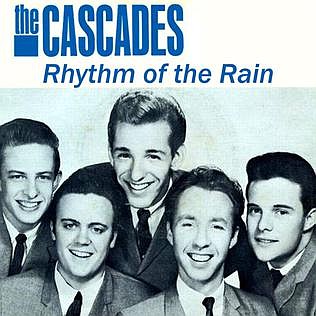
Further south, on the southwest corner of College and University Avenue, is a vast strip mall parking lot where the Red Coat Inn once stood (at 5933 University Avenue). The Inn and its adjoining bowling alley, University Lanes, was a popular teen hangout in the late ’50s and early ’60s. Many came to see popular local band The Cascades, a regular at the Inn both before and after “Rhythm of the Rain” became their first and only Top 40 hit. Said to be a favorite song of the late John Lennon, “Rhythm” had been recorded at the famed Gold Star Studios in Los Angeles; musicians on the record included “Wrecking Crew” members Hal Blaine on drums and Glen Campbell on guitar.
Over on the other side of the freeway, at 6386 Del Cerro Boulevard, half a block east of College, is a Windmill Farms supermarket that used to be an Alpha Beta. This is where Bob Marley and his entourage rolled a fat joint, wrapped in the front page of the San Diego Union, in the produce section. I’ll let promoter Marc Berman, who produced Marley’s show that night (July 24, 1978) at the SDSU Open Air Theater, tell the story: “It was me, his manager, his tour manager, and Marley. They wanted to pick out their own food for their evening dinner, so we got in the car and drove to the nearest market, which was about ten minutes away. We went into the market and I don’t remember anyone looking at us or recognizing Bob Marley.”
“All of a sudden, his manager literally rips the front page of the San Diego Union sitting there in a rack by the front door and starts rolling a joint, and then they lit it up. It was huge; they were passing it around to each other right there in the produce section, and obviously the odor was very strong and I started getting a little scared. They passed it to me, and even though I didn’t smoke pot, of course I took it – it was Marley who handed it to me – and they didn’t stop. They were smoking throughout the store. I got real high. I remember taking them back to the venue, and I stopped, thinking I’m at a red light. Marley says, ‘Mon, what are you doing?’ I had stopped a whole block before the light.”
Ending Up Out East
Our last two stops are in East County. The Bostonia Ballroom at 1340 Broadway in El Cajon, a majestic if boxy edifice now known as the Royal Palace Banquet Hall, hosted a steady stream of country and R&B luminaries in the ’50s and ’60s, including Johnny Cash, Hank Williams, Patsy Cline, Jerry Lee Lewis, Merle Haggard, Roy Orbison, Carl Perkins and Charley Pride. As of October 2021, the building was reportedly in escrow, after having been on the market for $4.5 million.
And then there’s the Spring Valley Inn at 9034 Camp Drive in Spring Valley, where the Beat Farmers got their start in the early ’80s. The roots-rockers even recorded a live album there in 1983. “Recorded at a sleazy biker bar in extremely high low fidelity just a couple months after they formed and a year before their first record was released, Live At Spring Valley Inn, 1983 presents the original line-up of the Beat Farmers undergoing alcohol-marinated natal screams,” reads the “product description” on Amazon. A classic dive bar, the inn is still around, promising, according to its Facebook page, “cheap drinks, crazy people and never a dull moment.”


Buckle Up
Slide into the passenger seat and buckle up: we’re about to take a driving tour down a decidedly rocky road. Yes, California’s second-largest city will always take a backseat to Los Angeles, which gave the world the Beach Boys, the Byrds, the Doors, and countless other rock 'n' roll legends. But San Diego has its share of storied rock 'n' roll landmarks worthy of recollection, particularly at a time when vinyl record sales are surging and classic rock songs keep popping up in popular movies and video games. (It’s not just the Guardians of the Galaxy Awesome Mix; you also heard Black Sabbath’s “Paranoid” in 2017’s Kong: Skull Island, and of course, AC/DC’s “Back in Black” in the first Iron Man movie.)

On today’s tour, we’re not stopping by the obvious choices, the places that are still thriving, like the Belly Up Tavern in Solana Beach, which has served as the hotbed of live music in North County since the middle ’70s (and where the Rolling Stones played a private show a few years back). Or the arenas, amphitheaters and stadiums that continue to host the biggest of the big national touring acts, from Paul McCartney to the Eagles.
Instead, we’re going to pinpoint twenty-six locations in San Diego that should be of interest to any self-respecting rock ‘n roll historian. From the family home of Doors singer Jim Morrison in Coronado to the Del Cerro supermarket where Bob Marley once smoked a fat one in the produce section; from the former skating rink in downtown where Elvis Presley played his first-ever San Diego concert to the local coffeehouses that launched the careers of Tom Waits and Jewel; from the dive bars that were favorite watering holes of Eddie Vedder and Cameron Crowe to the College Area Jack-in-the-Box where the four original Ramones got their first taste of Mexican food (yes, the cheapo tacos).

Downtown, Everything’s Waiting for You
We’ll start our tour in downtown, on the southeast corner of Petco Park, where the San Diego Arena — originally Glacier Gardens — used to stand, right where Eighth Avenue ran into Harbor Drive. The Arena was both skating rink and athletic auditorium, and it’s where Elvis Presley made his first-ever San Diego concert appearance in April 1956. Elvis was a cultural earthquake. At the time of his two-night stand, April 4 and 5, his song “Heartbreak Hotel” had just come out and was racing up the charts. More than 10,000 screaming fans, most of them women, crowded into the auditorium to see the King do his thing.

A small group of them broke into Presley’s dressing room after the show and stole the toilet seat. Deejay Don Howard told Kicks that Presley’s Cadillac, parked outside, was covered with obscene messages, “and two sailors were arrested for masturbation during the show from watching the antics of the girls.” A dozen nude girls were also busted at the nearby El Cortez Hotel as they ran through the lobby, trying in vain to find Presley’s hotel room. The city promptly passed a resolution forbidding Presley from ever playing in San Diego again.
Fast forward two decades and head west. Our next two stops are where San Diego’s late-’70s punk-rock scene began at two clubs: the Skeleton and the Zebra. From January to May of 1980, The Skeleton Club occupied the ground floor of the Douglas Hotel at 206 Market Street; the hotel was built in 1924 and torn down in 1985 as part of the first wave of downtown revitalization. During its brief life, the club hosted such pioneering punk bands as X, The Plugz, The Weirdos, Lydia Lunch, Alley Cats, and local favorites such as DFX2 and The Rick Elias Band.

The club also hosted the San Diego debut of The Go-Go’s, who opened for the Alley Cats. Tim Mays, who now runs the Casbah at Kettner and Laurel, was one of the original partners in The Skeleton Club. Mays said the club’s location, two blocks from the police station, was a problem that ultimately led to its closure due to licensing issues. “It was very, very underground,” Mays says. “The club had this red and gold flocked wallpaper, and it was dark, and back then Second and Market was a pretty sketchy area. But it was invigorating, it was exciting.” Today, the site of the Douglas Hotel is home to Market Street Square, a rather homely pink-and-beige mixed-use building with apartments and ground-floor businesses such as the Happy Head massage parlor.

The nearby Zebra Club (560 Fifth Avenue), which opened just after The Skeleton Club, was home to such pioneering local new wave bands as the Dinettes and the Crawdaddys. Cameron Crowe was a regular when he returned to San Diego, masquerading as a high school student, to research Fast Times at Ridgemont High, the best-selling book that became a top-grossing movie. The brick building that was home to the Zebra Club was subsequently restored as part of the Gaslamp Quarter’s revitalization and is now home to El Chingon, a Mexican restaurant and bar.

Just a few blocks south, on the southwest corner of Front and G, is the spot where a former skating rink-turned-concert venue called the Hippodrome (211 G Street) brought a taste of the Summer of Love to San Diego in the late ’60s. Promoters booked mostly San Francisco bands into the venue, including the Quicksilver Messenger Service and the Grateful Dead, as well as the artsy Velvet Underground, which played there two nights in June 1969. The site is now home to the 600 Front Apartments.
Over the Rainbow, Over the Bridge
Next on our tour, we’re going to cross the bridge into Coronado, which is, perhaps surprisingly, home to more rock ‘n roll landmarks than any other single community in San Diego County. Start with the stately Spanish-style home at 735 Guadalupe Avenue that was home to George and Clara Morrison, parents of Jim Morrison — the notoriously talented, and just plain notorious, lead singer of The Doors.


The nomadic Morrison family had moved to Coronado in the early ’60s when George was stationed at the North Island Naval Air Station; Jim was already living in Los Angeles, where he attended UCLA. In 1967, the same year The Doors’ first album was released, the elder Morrison was elevated to the rank of Admiral. Jim was estranged from his conservative military family, particularly his father, who upon hearing the first Doors album reportedly wrote his son a letter, pleading with him to give up music. Jim Morrison, an alcoholic and drug user, died in July 1971; his girlfriend found him dead in the bathtub of the apartment the two shared in Paris. Admiral George Morrison died in 2008, at the age of 89, in a Coronado hospital. (The Morrisons also briefly lived at 2634 Arnott Street in Clairemont when Jim was 11).

Joey Harris, the lead singer of San Diego’s own Beat Farmers, grew up in the iconic “Wizard of Oz” house at 1101 Star Park Circle, so nicknamed because it was once the home of Oz author L. Frank Baum. Harris joined the Beat Farmers in 1986, on the eve of their major-label debut on MCA/Curb Records; he sang lead on “Hideaway,” which became an FM radio hit and was featured on the Major League movie soundtrack. Music was in his blood: Harris’ uncle was Nick Reynolds, an original member of the Kingston Trio. (Reynolds, incidentally, also lived in Coronado long after his run with the Kingston Trio came to an end in 1967. In the early 1980s, he worked as a bartender at Bula’s Pub & Eatery at 170 Orange Avenue, now home to the Coronado Brewing Company. Reynolds later married Leslie Yerger Kapiloff, the ex-wife of Judge Lawrence Kapiloff. He died in 2008.)
Pet Sounds at the petting zoo
Time to leave the island. Our next stop is the San Diego Zoo (2920 Zoo Drive), which is where The Beach Boys in February 1966 shot the cover photo for what many consider their masterpiece, Pet Sounds. The photo of the five band members surrounded by goats and sheep was taken in the petting coral of the Children’s Zoo, recently torn down to make room for a new 3.2-acre interactive exhibit called Wildlife Explorers Base Camp.

The shoot, according to an interview Beach Boy Al Jardine did many years later with the San Diego Union-Tribune’s George Varga, was the idea of the Capitol Records art department, which saw the title of the band’s upcoming album and, without bothering to give it a listen, assumed the songs were about animals. Jardine told Varga. “The goats were the most aggressive and that’s why that big white goat in the cover photo was in my face while I was feeding it. We were thrown into the thing, pretty much.”

Midway Through This Tour
Heading back to downtown and then north, we stop at a trendy little bar called the Aero Club at 3345 India Street. It’s a bit more upscale these days, with pricey whiskeys and other alcoholic imbibements arranged on bleacher-like shelves behind a stylish bar, but back in the late ’80s, it was a classic dive bar, and it’s where Eddie Vedder liked to hang out before he moved to Seattle to form Pearl Jam. Sometimes he would go there with his friends from San Diego State University or bandmates from Bad Radio, the band he was in at the time; other times, he’d hang with his girlfriend, Beth Liebling, who was majoring in journalism, also at San Diego State.
A little further north, on the Pacific Highway frontage road at 4024 Pacific Highway, stands an unassuming industrial building, constructed in 1943 to accommodate airplanes, that was once the home of J.J.’s, a hoppin’ concert spot jointly owned by aspiring club owner Jerry Herrera and concert promoter James Pagni (hence the name, taken from their first initials).

Between 1973 and 1975, J.J.’s featured a steady stream of touring rock acts, either not yet or no longer big enough for larger venues such as the San Diego Sports Arena or Golden Hall. Among them: the Electric Light Orchestra, Steely Dan, King Crimson, the New York Dolls, Foghat, the Climax Blues Band, and the Supremes. Years later, it would be repurposed as Cousin’s Warehouse, an appliance and consumer electronics mega-store known for its bright-orange exterior. Today, the building is subleased to several tenants, including Crossfit Humanity and Sign King.

Further north, at 1130 Buenos Avenue, off Morena Boulevard, is a dark and musty rock 'n' roll club called Brick by Brick, virtually unchanged from its run in the late ’70s and ’80s as The Spirit, a legendary rock ‘n’ roll establishment opened by Jerry Herrera shortly after J.J.’s was shut. The Spirit was haven for local new wave bands as well as national touring acts ranging from X, The Circle Jerks, and Black Flag, to R.E.M., who played there in June 1983, around the same time their debut album Murmur was released.
Through Clairemont to the Beaches
Our next two stops take us deep into the heart of Clairemont. Driving up Clairemont Drive from the 5, there’s a paving-stone driveway, leading to a condo development, where 3093 Clairemont Drive used to be (right next to Moda Yoda). This is the site of the old Clairemont Bowl and its adjoining nightclub, The Quad Room, where San Diego’s most famous native son, Gary Puckett, launched a career that would see him lead his band, The Union Gap, to the top of the pop charts with such late ’60s hits as “Woman, Woman,” “Young Girl,” “Lady Willpower” and “Over You.”

Gary and the Remarkables were the house band at The Quad Room in 1966; a year later, they changed their name to The Union Gap, got signed to Columbia Records, and began a hit streak that in 1968 saw them sell more records than anyone except for The Beatles. Puckett, who turns 80 in October, now lives in Florida but still tours the country with a new version of The Union Gap; the band still performs in their trademark Civil War uniforms.
A little further up the road, on a side street with the lovely name of “Ute,” is Clairemont High School, whose grand opening in September 1958 featured a concert by Ritchie Valens, a big draw with teens due to his two big hits, “La Bamba” and “Donna.” The show had been booked by local deejay Harry “Happy Hare” Martin. “I was asked by the principal of the school to put on a show to promote school spirit,” Martin said in an interview published in the November 1979 issue of Kicks Magazine. “I called Richie Valens and, in my naivete, I just asked him to come down from Los Angeles [where he lived] and sing in the school yard. It was a typical September day when he performed for an hour at noon, on hot clay with absolutely no grass around.” Five months later, Valens was dead, killed in a plane crash in Iowa along with Buddy Holly and J.P. “The Big Bopper” Richardson.


Continuing north on Clairemont Drive, turn left on Balboa and drive west into Pacific Beach. Mission Bay High School, at 2475 Grand Avenue, earns a spot on our list because Frank Zappa spent his sophomore year here in the middle ’50s while he and his family were living in San Diego. It was momentous school year for young Frank; he played in the school rhythm-and-blues band, The Ramblers, and was turned on to composer Anton Webern by band director Robert Kavelman, according to an undated Reader story. Webern and his 12-tone music would be a major inspiration for Zappa. (Zappa also attended Grossmont High School his freshman year.)

Further west, on the northeast corner of Mission Boulevard and Turquoise, is a tiny building (828 Turquoise) that used to be the Inner Change Coffee House. That’s where Jewel got her start back in 1993. Her boyfriend at the time, musician/songwriter Steve Poltz, recalls, “I met her when she was working at the original Java Joe’s in Poway. I said, ‘You should play somewhere nobody else is playing, so we found that place, the Inner Change, and this really cool lady named Nancy [Porter] was the owner, and then after a year all these people and record labels started showing up. It was really weird. You’d see limousine after limousine pull up to this tiny coffeehouse with surfers inside.” A bidding war erupted, and within months, at the age of 19, Jewel was signed to Atlantic Records and began recording her debut album, Pieces of You, which was released in February 1995 and went on to sell 12 million copies worldwide. Live portions of the album had been recorded at the Inner Change.
Less than two miles further south along the Mission Beach isthmus is the Single Fin Grill at 3842 Mission Boulevard. Fifty years ago, the historic building was known as The Heritage Coffee House, where Tom Waits began his illustrious career. Waits worked his way up from doorman to bartender and frequent open-mic performer at the Heritage, which at the time was a hotspot for latter-day folkies such as Sam Hinton and Big Joe Williams. Waits had grown up in Chula Vista, attended O’Farrell Community School, and worked as a waiter at Napoleone’s Pizza Restaurant in National City. After gigging at the Heritage, he moved to Los Angeles and snagged a recording contract with Asylum Records. Waits in 2015 was ranked at No. 55 on Rolling Stone’s “100 Greatest Songwriters of All Time” list, four years after he was inducted into the Rock and Roll Hall of Fame.
Still further south, in Ocean Beach, is the Java Joe’s at 4994 Newport Avenue where Jason Mraz got his start more than twenty years ago. Bill Silva, who for eighteen years was Mraz’s manager, recalls, “The first time I took him in to introduce him to Joe, it happened to be a ‘greatest hits’ night with all the top local singer-songwriters performing. I remember Joe giving the skinny new kid a ‘You’ll have to prove yourself’ squint, but Carlos Olmeda and Gregory Page couldn’t have been more gracious and inviting, and one of them gave Jason his guitar and encouraged him to get up and take a turn at the mic. I think they all had the same goosebumps that I experienced the first time I saw Jason. That was April 1999, and our plan was to give Jason time to keep working on his songwriting and honing in his concert performance. Happy to say it all worked out!” It certainly did. Mraz went on to sell millions of albums and win two Grammy Awards. His biggest single, “I’m Yours,” spent no fewer than 76 weeks on the Billboard Hot 100. As for Java Joe’s, it’s now a Starbucks.
North County’s Good Schools
Our rock 'n' roll tour now ventures into North County, to the coastal town of Encinitas, where we find San Dieguito High School Academy (800 Santa Fe Drive). The school’s most famous alumnus is Chris Hillman, an original member of The Byrds and the Flying Burrito Brothers. Hillman grew up in Rancho Santa Fe, where his dad, David Hillman, was the publisher of the Rancho Santa Fe Times. Chris developed an interest in folk and bluegrass and learned to play the mandolin, joining such outfits as The Scottsville Squirrel Barkers and The Golden State Boys. After graduating from San Dieguito High School, Hillman moved to Los Angeles, where he was recruited to join a new band, The Byrds, whose subsequent hits “Mr. Tambourine Man” and “Turn, Turn Turn” combined folk music with a Beatles beat and won the band acclaim as America’s answer to the Fab Four. Hillman, now 76, currently lives in Ventura.

Next is another high school, this one to the east in the inland suburb of Rancho Bernardo. Rancho Bernardo High School (13010 Paseo Lucido) was the launching pad for Blink-182, which over the last thirty years has sold upwards of 50 million albums worldwide. Guitarist Tom DeLonge enrolled in the school after he had been kicked out of Poway High for being drunk at a basketball game. Competing in a battle of the bands contest, DeLonge met drummer Scott Raynor; he later met bassist Mark Hoppus, and in 1992 the three formed the nucleus of Blink-182. The band split in 2005 but has since gotten back together on several occasions, with various personnel changes. In 2011, Jon Caramanica wrote in the The New York Times that “no punk band of the 1990s has been more influential than Blink-182.”

Further north, at 905 Viewpoint Drive, just north of Lake San Marcos, is the home where Ike Turner spent his final years — and where he died on December 12, 2007, at the age of 76, reportedly of a cocaine overdose, according to CNN. Turner was best known as the “Ike” in The Ike and Tina Turner Revue, the ’60s soul troupe best known for the Phil Spector-produced classic “River Deep, Mountain High.”

Due west, in an Oceanside trailer park known as El Camino 76, at 220 North El Camino Real, space 5, is the boyhood home of Stevie Salas, a homegrown musician who went on to tour and record with the likes of Rod Stewart, Public Enemy and Mick Jagger, in addition to fronting his own band, Colorcode, which achieved superstardom in Japan. Salas, who is of Apache ancestry, most recently executive produced the Emmy Award-nominated music documentary Rumble: The Indians Who Rocked the World, which aired on PBS, won a storytelling award at the Sundance Film Festival and is now showing on Netflix.
College Rock
We’re heading back south to the College Area. Our first stop is the Jack-in-the-Box restaurant at 5155 College Avenue, just north of Montezuma Road near San Diego State University. This is where The Ramones — the four originals, Joey, Johnny, Dee Dee and Tommy — had their very first taste of Mexican food. This one’s a personal story: On March 12, 1977, the groundbreaking New York punk band was booked into the SDSU Backdoor for their first San Diego (city) appearance. I was the rock critic for the school’s Daily Aztec.

The afternoon of the show, I got a frantic call in the Aztec office from my record company contact, who breathlessly told me the band’s road manager had fallen ill and asked if there was there any way I could pick the band up at the airport, feed them, get them booked into their hotel, and get them to their two shows that night at the Backdoor? No problem, I assured her. Being 18 and not much of a gourmand, after I picked the band up, I took them to my favorite restaurant, which was close to both the Backdoor and their hotel further east on El Cajon Boulevard: Jack-in-the-Box. I ordered my customary two tacos for 99 cents and all four Ramones did the same. Fast forward to 2005: I am producing a Music on DVD conference in Los Angeles, and one of our panelists is Tommy Ramone, the last surviving member of the original quartet. Over dinner, I mentioned the first time I met him and his eyes lit up: “Yeah, you’re the guy who introduced us to Mexican food.”
Just a few blocks away, at 5704 El Cajon Boulevard, is an art-deco-ish building that was once the home of Monty Rockers, a record store Dan McLain opened in early 1977, shortly before he would form pioneering local punk band The Penetrators and years before he would achieve international fame as the beer-swillin’, table-leaping Country Dick Montana of the Beat Farmers. In an October 1977 Reader story on local record stores, writer George Varga praised the store’s “living room atmosphere” and singled out such amenities as free coffee, water and pinball. Unlike other record stores, he wrote, Monty Rockers also rents records. “I don’t take just any albums, like some stores do,” McLain told Varga. “This is all handpicked stuff, and I won’t take stuff by people that never went anywhere, like Three Dog Night or The Monkees.”
Two blocks further east, at 5880 El Cajon Boulevard on the southeast corner of El Cajon and 59th Street, is California Cremation and Burial. The building was home to a much more lively operation in the late ’80s, when it was Winters restaurant and nightclub, popular with the partying San Diego State crowd. Every Saturday night, Winters hosted “Red Tape,” a weekly “goth” event cohosted by Beth Liebling, whose boyfriend was Eddie Vedder, later of Pearl Jam. Vedder helped promote the event by designing and distributing fliers, and was rewarded in October 1990 with the first-ever gig for his new band, Pearl Jam, previously known as Mookie Blaylock (after the basketball player).

Further south, on the southwest corner of College and University Avenue, is a vast strip mall parking lot where the Red Coat Inn once stood (at 5933 University Avenue). The Inn and its adjoining bowling alley, University Lanes, was a popular teen hangout in the late ’50s and early ’60s. Many came to see popular local band The Cascades, a regular at the Inn both before and after “Rhythm of the Rain” became their first and only Top 40 hit. Said to be a favorite song of the late John Lennon, “Rhythm” had been recorded at the famed Gold Star Studios in Los Angeles; musicians on the record included “Wrecking Crew” members Hal Blaine on drums and Glen Campbell on guitar.
Over on the other side of the freeway, at 6386 Del Cerro Boulevard, half a block east of College, is a Windmill Farms supermarket that used to be an Alpha Beta. This is where Bob Marley and his entourage rolled a fat joint, wrapped in the front page of the San Diego Union, in the produce section. I’ll let promoter Marc Berman, who produced Marley’s show that night (July 24, 1978) at the SDSU Open Air Theater, tell the story: “It was me, his manager, his tour manager, and Marley. They wanted to pick out their own food for their evening dinner, so we got in the car and drove to the nearest market, which was about ten minutes away. We went into the market and I don’t remember anyone looking at us or recognizing Bob Marley.”
“All of a sudden, his manager literally rips the front page of the San Diego Union sitting there in a rack by the front door and starts rolling a joint, and then they lit it up. It was huge; they were passing it around to each other right there in the produce section, and obviously the odor was very strong and I started getting a little scared. They passed it to me, and even though I didn’t smoke pot, of course I took it – it was Marley who handed it to me – and they didn’t stop. They were smoking throughout the store. I got real high. I remember taking them back to the venue, and I stopped, thinking I’m at a red light. Marley says, ‘Mon, what are you doing?’ I had stopped a whole block before the light.”
Ending Up Out East
Our last two stops are in East County. The Bostonia Ballroom at 1340 Broadway in El Cajon, a majestic if boxy edifice now known as the Royal Palace Banquet Hall, hosted a steady stream of country and R&B luminaries in the ’50s and ’60s, including Johnny Cash, Hank Williams, Patsy Cline, Jerry Lee Lewis, Merle Haggard, Roy Orbison, Carl Perkins and Charley Pride. As of October 2021, the building was reportedly in escrow, after having been on the market for $4.5 million.
And then there’s the Spring Valley Inn at 9034 Camp Drive in Spring Valley, where the Beat Farmers got their start in the early ’80s. The roots-rockers even recorded a live album there in 1983. “Recorded at a sleazy biker bar in extremely high low fidelity just a couple months after they formed and a year before their first record was released, Live At Spring Valley Inn, 1983 presents the original line-up of the Beat Farmers undergoing alcohol-marinated natal screams,” reads the “product description” on Amazon. A classic dive bar, the inn is still around, promising, according to its Facebook page, “cheap drinks, crazy people and never a dull moment.”
Comments